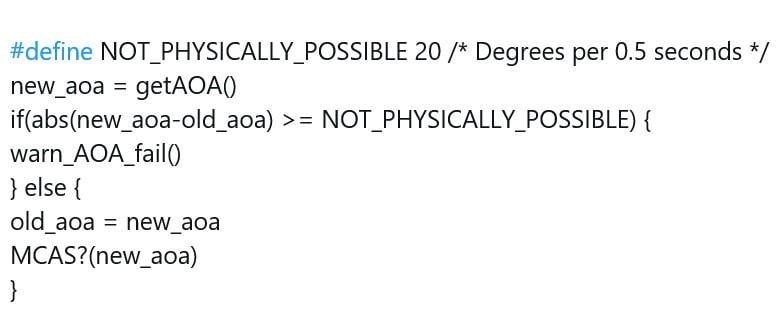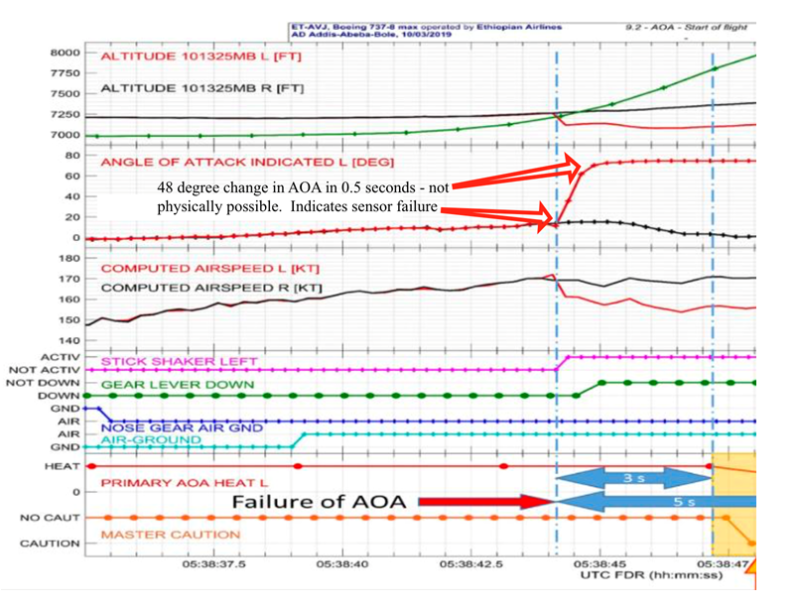*This story was updated with further details on March 15. It appeared in its original form March 9.
Eight lines of software code could have prevented the twin Boeing 737 MAX disasters that killed 346 people four years ago.
That’s the belief of Greg Travis, a software expert witness in a civil appellate case to be argued April 20 that seeks information from the FAA into how the Boeing’s MCAS control code was written and tested by both Boeing and the government oversight agency.
As the second of the MAX crashes recently passed its fourth anniversary on March 10, what the FAA did or did not do in its MCAS oversight is still on the minds of Travis and Flyers Rights Education Fund. The group is seeking full disclosure under a freedom of information request denied by a lower court in 2021. Flyers Rights’ appeal versus the FAA goes to oral argument in US Court of Appeals for the DC Circuit on April 20. (USCA case #21-5257)
“The original implementation of MCAS was unfathomably incompetent,” Travis said in an interview Thursday with Fierce Electronics. “I still cannot imagine how it was possible that something so obviously defective was ever fielded.”
Travis and Flyers Rights wants transparency with FAA records on how the software was developed, partly to help the FAA (with congressional and taypayer oversight) prevent future crashes as more complex technology is introduced into planes that are heavily dependent on automation and control algorithms.
So far, the transparency is missing, said Paul Hudson, president of Flyers Rights via email. “There’s lots of talk of commitment to transparency especially regarding MAX but the FAA’s actions are the exact opposite,” Hudson said. “The FAA has a culture of near total secrecy in safety regulation and enforcement. It claims nearly everything is exempt from disclosure under the Freedom of Information Act [to protect] trade secrets, proprietary or internal communications or personal privacy.”
In Flyers Rights’ original FOIA request, the FAA released 9,000 pages of documents and “redacted nearly everything of substance,” Hudson said. “This included details of the MCAS fix, the comments of the FAA to Boeing, the flight test protocols and the flight test results and names of the personnel involved.”
MCAS (Maneuvering Characteristics Augmentation System) was implicated in causing the two planes to nosedive, causing the crashes, despite manual attempts by pilots to stop the dives. MCAS’ intended role was to automatically correct the MAX from climbing into a stall, which experts said could happen under the MAX’s design with larger engines mounted on an original 737 fuselage.
The software was originally written to detect the angle of attack in an unsafe climb from a single sensor when it should have been written to detect more than one such sensor to call for a reduction in altitude.
“A single sensor was relied upon for a decision and angle of attack sensor are unreliable because they are subject to weather, hit by birds and more,” Travis said. “But nobody ever said, ‘you are using just one sensor’ and that software should never have gotten out the door. Nobody can understand how that happened.” Which is one reason the FOIA request should be granted, Flyers Rights argues.
In the Ethiopian crash on March 10, 2019, a single sensor indicated the plane had pitched upward by dozens of degrees in only a second, something not physically possible, Travis said. But a short amount of code in MCAS could have been added to discount impossibly high sensor readings and signaled the bad sensor to pilots.
“Eight lines of code could have been added, even if only one sensor was used, saving 346 lives,” Travis said. Here are the eight lines of code Travis suggested:


Fixes after MAX planes were grounded allowed the FAA to recertify the planes for flights. They included relying on two angle of attack sensors and other measures.
Travis believes the FAA’s contention that it must protect Boeing’s trade secrets with MCAS and other designs in the MAX should not apply because so many people died, making it a special case.
“If we could trust the FAA, then 346 people would be alive. The FAA outsourced its job to Boeing and Boeing intentionally withheld information from you. How are we supposed to trust you, FAA, next time around when you failed the first time around and people died? The MAX is a special case because you screwed up so badly and you are under a special obligation now.”
Flyers Rights is not seeking detailed information on the MAX development and FAA review after the crashes, Travis said. What the group seeks is basic insight into how Boeing was able to meet federal standards, specifically part 25 of the Federal Aviation Regulations, that specify parameters for how an aircraft under review is deemed airworthy.
Boeing has made adjustments to its corporate procedures for oversight of aircraft design and construction and admitted two years ago in a deferred prosecution agreement with the Department of Justice to defrauding the FAA by concealing safety problems with the 737 MAX and has blamed two technical pilots for misleading regulators during the certification process.
Boeing also agreed to pay $2.5 million, including $1.7 billion to airlines for losses when the planes were grounded for 20 months. Boeing agreed to pay $500 million in compensation to the families of those killed.
However, In January, Boeing pleaded not guilty to a felony criminal charge of conspiracy to commit fraud in federal court in Texas. A federal judge last fall agreed relatives’ rights had been violated because they should have been consulted before the Department of Justice and Boeing reached their deferred prosecution agreement.
The concerns over MCAS in the 737 MAX came up this week during a hearing by the Senate Commerce committee when evidence was presented of two recent incidents with trim controls on new Boeing 737 MAX planes in flight. At the hearing, Committee Chair Maria Cantwell, D-Washington, said experts at FAA need to ensure that during future aircraft certification reviews “another MCAS isn’t projected as part of the system and people don’t understand it.”
RELATED: Deadly Boeing 737 MAX crashes remain US Senate focus after four years